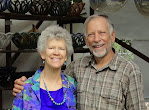Community Unity
Easter preparations start a week or more ahead of time with singing rehearsals. Six or seven groups get together to practice harmonies and accompaniment, usually an electric piano and various stringed instruments. Ruperta and Ivan started late with only a couple of rehearsals with the Huayllano group, but they have participated every year and know the music. Ivan plays a beautiful mandolin. Performances are vigils in the churches Thursday through Saturday nights.
Thursday we went to the Adventist Church in Huayrapata, rather close to our house. Armando is an excellent music teacher and musician of many instruments, from keyboards to stringed instruments and even the accordian. He coached the chorus, probably 30 people of all ages, including many of our family members. He accompanied on the electric piano.
One song which they know in Spanish,
Cant Aleluya al Señor, I taught him several years ago the English,
Sing Halleluia to the Lord, and the Hebrew,
Shir Alleluya a Donai. He taught the three languages to the chorus and I joined them in front of the room for the song. I was most welcome. Happily, the Adventists don't stay up all night and we got a good night's sleep.
That is not the case with the rest of the community. Good Friday, six groups sang in the big Catholic church in the plaza beginning at 8pm and singing until 2am! Sam and I crowded into the back of the room behind a group of men and listened until the Huayllano group sang and then gave up our seats to the singers and found fresh air and company outside the church. We definitely did not keep the vigil until 2am with the singers.
 |
| Six different groups sang in rotation at the main church. |
Saturday was the sweetest evening for me. Huayllano is the furthest to the south, nearly an hour hike from our house. They have their own smaller Catholic Church, newly painted a couple of weeks ago. We went early with Ruperta and Ivan, and ate soup with the chorus. Huge pots of soup were served; we brought our own bowls and spoons. Afterward everyone came into the community room, had a sort of meeting. Singers are committed to attend every rehearsal on time or they are fined! The meeting listed the fines. I think this is how they pay for the beer, of which we drank until time to sing.
 |
| from the balcony |
I sat behind and within a group of men, one of whom had large print, large paper words of the songs. Mostly in Quechua with a few recognizable words for me. I was able to totally sing along. I was also welcomed to join the men in singin, even thought the women sit on the floor and have counterpoint and harmony.
 |
| Words to songs I could read! |
 |
| This elegant man sat at the end of my pew. |
At one point, during a break in the singing, all the men in the pews in front and behind me, probably 15 or so, began actively trading the coca leaves--they totally included me, Sam too. Arms reached around and under other arms with hands full of coca, everyone smiling and sharing in this traditional gesture of relationship. I was enthralled.
We stayed until midnight and walked home in moonlight, the waves of the lake and the wind in the trees whispering their songs. Magic night.
Easter Sunday
Easter is the annual ceremony to pay the
Patcha Mama, the Mother Earth, for the whole year. Families individually create their own
despatchos and bring them to the shamen or
pacos at the ceremony. A
despatcho is a dispatch or a sending of prayer, of intention. Traditionally a large cloth, especially woven for the purpose, is filled with coca leaves and opened with respect. Each family member chooses well-shaped leaves in groups of three, called a
k'intu. Each
k'intu holds the prayers and intentions of the person who chooses the leaves. These physical prayers are placed on a large piece of paper, topped with flower petals, sweets and wine, maybe medicine, sometimes drawings or other symbols of the intentions. Then the paper is folded closed and carried to the top of the mountain.
 |
| family despatcho after breakfast |
Our family had many prayers for the healing of Luz Nati (see
Bus Accident Story for details), many for the safe travels and success and return of Sam and I, for healthy crops, for gratitude of all our blessings. Sam and I carried this, and also the
despatcho from Gonzalo's family, up to Mulcina, the ceremonial site at the high point of Taquile.
We got to the plaza in time to join the procession to Mulcina with the village officers.
 |
| Autoridades emerge from mass at the church |
We followed the wives of the
Autoridades to the highest point on Taquile. The many-colored skirts make a flowers as they climb the hill.
The procession was lead by a band playing a syncopated rhythm. They intermittently played during the activities up on Mulcina.
Many many
estallias full of coca leaves are shared,
k'intus chosen and offered. This long ceremony of gratitude to the Earth lasts until dusk.
 |
| estallias full of coca leaves |
 |
| Sam receives coca leaves |
 |
| Women share with women; men with men |
The gender sharing (not strict) includes the beer. This older woman and I shared beer and coca:
At the end of the day, we followed the procession down the hill to an evening of food and, later, beer. We slipped out after soup, full with the magic of the ritual and celebration.





















































